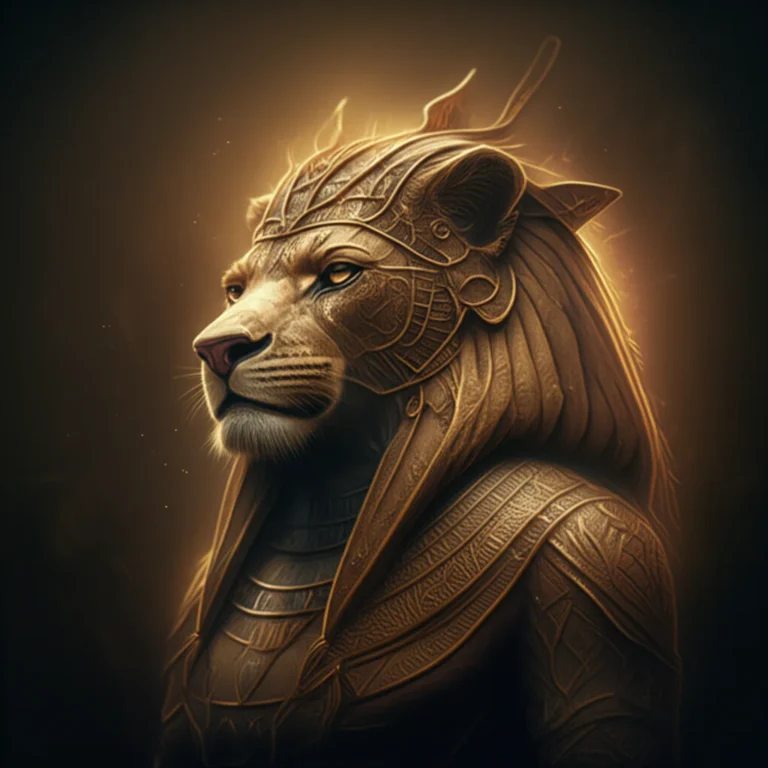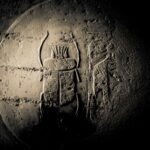Support our educational content for free when you purchase through links on our site. Learn more
The Dead Sea Scrolls Unveiled: 12 Secrets You Didn’t Know 📜
Imagine stumbling upon a hidden cave in the arid hills near the Dead Sea and discovering ancient manuscripts that would rewrite history. That’s exactly what happened in the mid-20th century when Bedouin shepherds accidentally uncovered the Dead Sea Scrolls—a collection of texts that have since transformed our understanding of the Bible, Judaism, and early Christianity. But what exactly do these scrolls reveal? Who wrote them? And why do they still captivate scholars and history lovers alike?
In this comprehensive guide, we peel back the layers of mystery surrounding the scrolls—from their astonishing discovery and the enigmatic Qumran community to the painstaking work of piecing together thousands of fragments. We’ll explore the scrolls’ contents, their biblical and historical significance, and the controversies that have swirled around them. Ready to journey through time and uncover the secrets of one of archaeology’s greatest finds? Let’s dive in!
Key Takeaways
- The Dead Sea Scrolls are ancient Jewish manuscripts dating from the 3rd century BCE to the 1st century CE, discovered in caves near Qumran.
- They include the oldest known copies of biblical texts, as well as apocryphal writings and sectarian documents.
- The scrolls provide unparalleled insights into Second Temple Judaism, the origins of Christianity, and the transmission of biblical texts.
- Their discovery was a mix of luck, archaeology, and scholarly dedication, involving Bedouin shepherds, excavations, and cutting-edge digital technology.
- Controversies over ownership, interpretation, and preservation have added complexity to their story.
- Today, the scrolls are accessible through museum exhibitions and digital archives, inviting everyone to explore this ancient treasure.
👉 Shop related history books and resources:
- Dead Sea Scrolls Books: Amazon | Barnes & Noble
- Biblical Archaeology Resources: Amazon | Christianbook
Table of Contents
- ⚡️ Quick Tips and Facts: Your Scroll Snapshot!
- 📜 The Ancient World of Qumran: Setting the Stage for the Scrolls
- 🤯 The Astonishing Discovery: How Bedouin Shepherds Stumbled Upon History
- ⛰️ The Qumran Caves: A Treasure Trove Unveiled
- ✍️ Who Wrote Them? Unraveling the Mystery of the Scroll Scribes (The Essene Connection & Beyond)
- 🔍 What’s Inside? A Deep Dive into the Diverse Content of the Scrolls
- 1. Biblical Scrolls: Echoes of Ancient Scripture
- 2. Apocryphal and Pseudepigraphal Works: Lost Books and Hidden Narratives
- 3. Sectarian Texts: The Voice of the Qumran Community
- 4. Legal and Liturgical Texts: Rules, Rituals, and Daily Life
- 5. Unique Scrolls: The Copper Scroll and the Temple Scroll
- 6. Languages and Scripts: A Linguistic Tapestry
- 🧩 From Fragments to Full Texts: The Meticulous Work of Assembly and Photography
- 🔬 The Physicality of History: Materials, Condition, and Preservation Challenges
- 📚 The Scholarly Quest: Deciphering, Translating, and Interpreting the Scrolls
- 🌐 Bringing Them to Light: The Long Road to Publication and Accessibility
- ✝️ Their Earth-Shattering Impact: The Biblical Significance of the Dead Sea Scrolls
- 🌍 Beyond the Bible: How the Scrolls Illuminate Second Temple Judaism
- 🏛️ The Scrolls on Display: Where to See These Ancient Wonders (Museum Exhibitions)
- ⚖️ Who Owns History? The Complexities of Dead Sea Scrolls Ownership and Custody
- 🕵️♀️ Controversies and Conspiracies: Debunking Myths and Addressing Challenges
- 💻 The Digital Revolution: Accessing the Scrolls in the 21st Century
- 🔮 The Future of Scroll Research: What’s Next for Qumran Studies?
- ✨ Conclusion: The Enduring Legacy of the Dead Sea Scrolls
- 🔗 Recommended Links: Dive Deeper!
- ❓ FAQ: Your Burning Questions Answered
- 📖 Reference Links: Our Sources
Quick Tips and Facts: Your Scroll Snapshot!
To understand the Dead Sea Scrolls, it’s essential to start with the basics. The scrolls are a collection of ancient Jewish manuscripts from the Second Temple period, discovered between 1946 and 1956 in the Qumran Caves near the Dead Sea. They include the oldest surviving manuscripts of books later included in biblical canons, as well as deuterocanonical and extrabiblical books. For more insights into bible mysteries, visit https://www.historyhidden.org/bible-mysteries/. The scrolls shed light on the emergence of Christianity and Rabbinic Judaism, making them a crucial part of history.
Key Facts at a Glance
- Discovery: Between 1946 and 1956
- Location: Qumran Caves near the Dead Sea
- Content: Biblical, deuterocanonical, and extrabiblical books
- Languages: Mostly Hebrew, also Aramaic and Greek
- Material: Parchment, papyrus, and copper
- Significance: Oldest surviving manuscripts of biblical books, insights into early Christianity and Judaism
The Ancient World of Qumran: Setting the Stage for the Scrolls
The Dead Sea Scrolls were found in the Qumran Caves, which are located near the ancient settlement of Qumran. This area is significant because it provides a unique window into the lives of the people who lived there, believed by many to be the Essenes, a Jewish sect. The Qumran community was known for its strict adherence to Jewish law and its separation from the rest of Jewish society. To learn more about similar communities and their beliefs, visit our category on Folklore and Legends or explore Mythology Stories.
Life in Qumran
Life in Qumran was highly regulated, with a strong emphasis on ritual purity and communal living. The community was organized around a strict set of rules, as outlined in the Community Rule scroll. This scroll provides valuable insights into the daily life, beliefs, and practices of the Qumran community.
The Astonishing Discovery: How Bedouin Shepherds Stumbled Upon History
The discovery of the Dead Sea Scrolls is a fascinating story that involves chance, curiosity, and a bit of luck. In 1946/1947, Bedouin shepherds stumbled upon a cave near Qumran, leading to the discovery of the first seven scrolls, including the Isaiah Scroll and the Community Rule. This initial discovery sparked a wave of excavations and searches for more scrolls, eventually leading to the discovery of thousands of fragments.
The Role of Archaeology
Archaeology has played a crucial role in uncovering the secrets of the Dead Sea Scrolls. Excavations at Qumran and other sites have provided valuable context for understanding the scrolls and the communities that produced them. For example, the discovery of inkwells and a scriptorium at Qumran suggests that the site was a center of scribal activity.
The Qumran Caves: A Treasure Trove Unveiled
The Qumran Caves are a series of caves located near the ancient settlement of Qumran. Eleven caves have been found to contain Dead Sea Scrolls, with Cave 4 being the most productive, yielding around 90% of the scrolls and scroll fragments. The caves are significant not only for the scrolls they contain but also for the insights they provide into the lives of the people who hid them.
Cave Overview
- Cave 1: Contains the Great Isaiah Scroll and other significant texts.
- Cave 4: The most productive cave, with thousands of fragments.
- Cave 11: Contains the Temple Scroll and other important texts.
Who Wrote Them? Unraveling the Mystery of the Scroll Scribes (The Essene Connection & Beyond)
The question of who wrote the Dead Sea Scrolls is a complex one, with various theories and debates among scholars. The most widely accepted theory is the Qumran-Essene theory, which suggests that the scrolls were written by the Essenes, a Jewish sect that lived in Qumran. However, other theories, such as the Qumran-Sectarian theory and the Jerusalem origin theory, also have their supporters.
Theories at a Glance
- Qumran-Essene Theory: Scrolls written by Essenes at Qumran.
- Qumran-Sectarian Theory: Group of Jews near Qumran.
- Christian Origin Theory: Some fragments relate to the New Testament.
- Jerusalem Origin Theory: Scrolls originated in Jerusalem.
What’s Inside? A Deep Dive into the Diverse Content of the Scrolls
The Dead Sea Scrolls contain a wide range of texts, including biblical, apocryphal, and sectarian writings. These texts provide valuable insights into the beliefs, practices, and daily life of the communities that produced them.
1. Biblical Scrolls: Echoes of Ancient Scripture
The biblical scrolls are some of the most significant discoveries among the Dead Sea Scrolls. They include copies of every book in the Hebrew Bible, except for the Book of Esther. These scrolls are important for understanding the textual history of the Bible and the transmission of scripture.
2. Apocryphal and Pseudepigraphal Works: Lost Books and Hidden Narratives
Apocryphal and pseudepigraphal works are texts that are not part of the canonical Bible but provide additional insights into Jewish thought and literature during the Second Temple period. Examples include the Book of Enoch and the Book of Jubilees.
3. Sectarian Texts: The Voice of the Qumran Community
Sectarian texts are writings that reflect the specific beliefs and practices of the Qumran community. They include texts like the Community Rule and the War Scroll, which provide insights into the community’s organization, rituals, and eschatological beliefs.
4. Legal and Liturgical Texts: Rules, Rituals, and Daily Life
Legal and liturgical texts are important for understanding the daily life and practices of the Qumran community. They include texts related to purity laws, calendrical systems, and liturgical practices.
5. Unique Scrolls: The Copper Scroll and the Temple Scroll
The Copper Scroll and the Temple Scroll are two of the most unique and significant discoveries among the Dead Sea Scrolls. The Copper Scroll is a list of treasures from the Second Temple, while the Temple Scroll contains a detailed description of the temple and its rituals.
6. Languages and Scripts: A Linguistic Tapestry
The Dead Sea Scrolls are written in several languages, including Hebrew, Aramaic, and Greek. The scripts used include the paleo-Hebrew script, which is significant for understanding the development of the Hebrew alphabet.
From Fragments to Full Texts: The Meticulous Work of Assembly and Photography
The process of assembling and photographing the Dead Sea Scrolls has been a long and challenging one. From the initial photographs taken in 1948 to the latest digital imaging technologies, each step has required meticulous care and attention to detail.
Steps in Assembly and Photography
- Initial Photography (1948): First photographs taken by Trever.
- Infrared Photography (1952-1967): Used to enhance visibility of texts.
- Digital Infrared Imaging (1993-2012): Utilized by NASA to further enhance text visibility.
- DNA Scroll Assembly (2006-2020): Using DNA from parchment to assemble fragments.
- Digitization Project (2011-2016): Collaborative project between the Israel Museum and Google.
The Physicality of History: Materials, Condition, and Preservation Challenges
The Dead Sea Scrolls are made from parchment, papyrus, and copper, materials that have undergone significant deterioration over time. The preservation of these materials is crucial for maintaining the integrity of the texts and ensuring their availability for future generations.
Preservation Challenges
- Deterioration: Natural aging process and human interference.
- Storage Conditions: Initial poor storage conditions accelerated deterioration.
- Conservation Efforts: Ongoing efforts to preserve and conserve the scrolls.
The Scholarly Quest: Deciphering, Translating, and Interpreting the Scrolls
Scholars have been working tirelessly to decipher, translate, and interpret the Dead Sea Scrolls. This process involves a deep understanding of ancient languages, scripts, and historical contexts.
Steps in Scholarly Examination
- Textual Analysis: Deciphering and translating the texts.
- Historical Contextualization: Understanding the historical context in which the texts were written.
- Interpretation: Interpreting the meaning and significance of the texts.
Bringing Them to Light: The Long Road to Publication and Accessibility
The publication and accessibility of the Dead Sea Scrolls have been a long and sometimes contentious process. From the initial publications to the latest digital releases, making these texts available to the public has been a significant undertaking.
Publication Milestones
- Initial Publications: First texts published in the 1950s.
- Discoveries in the Judaean Desert: A 40-volume series publishing the scrolls.
- Digital Publication: Release on CD-ROM and online platforms.
Their Earth-Shattering Impact: The Biblical Significance of the Dead Sea Scrolls
The Dead Sea Scrolls have had a profound impact on our understanding of the Bible and its textual history. They provide the oldest surviving manuscripts of biblical books, pushing back the dates of these texts by over a millennium.
Biblical Significance
- Textual Reliability: Affirms the reliability of textual transmission.
- Textual Variants: Provides insights into textual variations among fragments.
- Biblical Books: Includes parts of the Tanakh and protocanon books.
Beyond the Bible: How the Scrolls Illuminate Second Temple Judaism
The Dead Sea Scrolls offer a unique window into the world of Second Temple Judaism, a period of significant religious and cultural change. They provide insights into the beliefs, practices, and daily life of Jewish communities during this time.
Insights into Second Temple Judaism
- Diverse Practices: Reveals a diversity of Jewish practices and beliefs.
- Eschatological Expectations: Provides insights into eschatological beliefs and expectations.
- Community Life: Offers a glimpse into the communal life of Jewish sects.
The Scrolls on Display: Where to See These Ancient Wonders (Museum Exhibitions)
The Dead Sea Scrolls are exhibited in various museums around the world, including the Shrine of the Book in Jerusalem and The Jordan Museum in Amman. These exhibitions provide a unique opportunity to see the scrolls up close and learn more about their history and significance.
Museum Exhibitions
- Shrine of the Book: Permanent display in Jerusalem.
- The Jordan Museum: Collection held by Jordan on display in Amman.
- Temporary Exhibitions: Exhibitions in the U.S., U.K., and other countries.
Who Owns History? The Complexities of Dead Sea Scrolls Ownership and Custody
The ownership and custody of the Dead Sea Scrolls are complex and disputed issues. Israel claims ownership, but this is disputed by Jordan and the Palestinian Authority, highlighting the political and cultural sensitivities surrounding these ancient texts.
Ownership and Custody
- Initial Custody: Moved to the Palestine Archaeological Museum.
- Current Custody: Most fragments held in the Shrine of the Book, Jerusalem.
- Disputes: Israel, Jordan, and the Palestinian Authority dispute ownership.
Controversies and Conspiracies: Debunking Myths and Addressing Challenges
The Dead Sea Scrolls have been surrounded by controversies and conspiracies, ranging from debates over their interpretation to claims of forgeries and hidden texts. Addressing these challenges requires a critical and nuanced approach.
Addressing Controversies
- Forgery Claims: Evaluating claims of forgery and authenticity.
- Interpretation Debates: Engaging with debates over textual interpretation.
- Accessibility: Ensuring the scrolls are accessible for scholarly research and public viewing.
The Digital Revolution: Accessing the Scrolls in the 21st Century
The digital revolution has transformed the way we access and interact with the Dead Sea Scrolls. From digital imaging to online platforms, these technologies have made the scrolls more accessible than ever before.
Digital Access
- Digital Imaging: High-resolution images of the scrolls.
- Online Platforms: Websites and databases providing access to the scrolls.
- Scholarly Tools: Digital tools for scholarly research and analysis.
The Future of Scroll Research: What’s Next for Qumran Studies?
As technology continues to evolve and new discoveries are made, the study of the Dead Sea Scrolls is an ongoing and dynamic field. Future research will likely involve further digitalization, new archaeological discoveries, and continued scholarly debate and interpretation.
Future Directions
- Digitalization: Further digitalization of the scrolls and related texts.
- New Discoveries: Potential for new archaeological discoveries.
- Scholarly Debate: Ongoing debate and interpretation of the scrolls.
Conclusion: The Enduring Legacy of the Dead Sea Scrolls
The Dead Sea Scrolls are nothing short of a historical jackpot — a treasure trove that has reshaped our understanding of ancient Judaism, the Bible, and the origins of Christianity. From their serendipitous discovery by Bedouin shepherds to the painstaking scholarly efforts to piece together thousands of fragments, these scrolls have illuminated a world long lost beneath the sands near the Dead Sea.
What makes the scrolls truly remarkable is their diversity — biblical texts, sectarian rules, apocalyptic visions, and unique documents like the Copper Scroll. They offer a rare glimpse into the religious, social, and political fabric of the Second Temple period. The scrolls have confirmed the reliability of biblical transmission over centuries while also revealing textual variants that challenge and enrich our understanding of scripture.
Of course, the journey hasn’t been without controversy — disputes over ownership, debates about authorship, and challenges in preservation have all added layers of complexity. Yet, thanks to modern technology, digital access, and ongoing research, the scrolls continue to reveal secrets and inspire new questions.
For anyone fascinated by ancient history, religion, or archaeology, the Dead Sea Scrolls are an indispensable window into the past — a story still unfolding. So, whether you’re a scholar, a curious reader, or a history buff, diving into the scrolls is like opening a time capsule filled with wisdom, mystery, and enduring human spirit.
Recommended Links: Dive Deeper!
- The Dead Sea Scrolls: A New Translation by Michael Wise, Martin Abegg Jr., and Edward Cook — Amazon
- The Meaning of the Dead Sea Scrolls by James VanderKam and Peter Flint — Amazon
- Dead Sea Scrolls Digital Library — Israel Museum Official Site
- The Copper Scroll: The Treasure Map of the Dead Sea Scrolls by J.H. Charlesworth — Amazon
FAQ: Your Burning Questions Answered
What are the Dead Sea Scrolls and why are they important?
The Dead Sea Scrolls are a collection of ancient Jewish manuscripts dating from the 3rd century BCE to the 1st century CE. They include the oldest known copies of biblical texts, sectarian writings, and other religious documents. Their importance lies in their ability to shed light on the textual history of the Bible, the diversity of Jewish thought during the Second Temple period, and the historical context of early Christianity.
How were the Dead Sea Scrolls discovered and who found them?
The scrolls were discovered between 1946 and 1956 in caves near Qumran by Bedouin shepherds. The initial find included seven scrolls, such as the Isaiah Scroll and the Community Rule. Subsequent archaeological excavations uncovered more caves and thousands of fragments, transforming our understanding of ancient religious texts.
What do the Dead Sea Scrolls reveal about the Bible and Christianity?
The scrolls contain copies of nearly every book of the Hebrew Bible (except Esther), confirming the accuracy and preservation of biblical texts over centuries. They also include apocryphal and sectarian writings that provide context for Jewish beliefs and practices during the time when Christianity was emerging, offering insights into the religious environment that shaped early Christian thought.
Are the Dead Sea Scrolls authentic and how have they been verified?
✅ The scrolls are authentic, verified through multiple scientific methods including radiocarbon dating, paleographic analysis, and material studies of parchment and ink. DNA testing of parchment has also helped in fragment assembly. The scrolls’ authenticity is widely accepted in the scholarly community.
What is the significance of the Copper Scroll among the Dead Sea Scrolls?
The Copper Scroll is unique because it is engraved on copper rather than written on parchment or papyrus. It lists locations of hidden treasures, possibly related to the Second Temple. Unlike other scrolls, it reads more like a treasure map, sparking much intrigue and debate about its purpose and the existence of these treasures.
How do the Dead Sea Scrolls relate to Jewish history and the ancient world?
The scrolls provide a snapshot of Jewish religious life, law, and eschatology during the Second Temple period. They reveal the diversity of Jewish sects, including the Essenes, and their practices. The scrolls also illuminate the socio-political tensions and cultural milieu that influenced Jewish and early Christian communities.
What secrets have been uncovered by translating and interpreting the Dead Sea Scrolls?
Translating the scrolls has uncovered lost texts, clarified biblical variants, and revealed sectarian rules and beliefs previously unknown. For example, the Community Rule outlines the organization of the Qumran sect, while apocalyptic texts reveal expectations of the end times. These discoveries have deepened our understanding of ancient Judaism’s complexity.
Reference Links: Our Sources
- Dead Sea Scrolls – Wikipedia
- The Leon Levy Dead Sea Scrolls Digital Library – Israel Museum
- Introduction – The Dead Sea Scrolls | Israel Museum
- The Shrine of the Book – Israel Museum
- The Jordan Museum – Dead Sea Scrolls Collection
We hope this deep dive into the Dead Sea Scrolls has sparked your curiosity and enriched your understanding of one of history’s most fascinating discoveries. Ready to explore more hidden histories? Check out our Folklore and Legends and Mythology Stories categories for your next adventure!




